
A Detailed Guide To Different Types Of White Paint And Primer

Create Your Dream Home With Our Painting Experts
Fill the form below to book a free site evaluation by Nerolac Nxtgen painting Services expert
The longevity and durability of a paint essentially depend on its adhesiveness. Paint can be considered satisfactorily adhesive when it can adhere to the wall surface even during aggressive natural conditions. This property of the paint is ensured by the coat of primer that is usually applied before the wall is layered with paint. Though the color of the primer is white, white paint and primer differ based on their ingredients. In this article, we will try to impart comprehensive knowledge about primers and their benefits.
What Is White Paint And Primer?
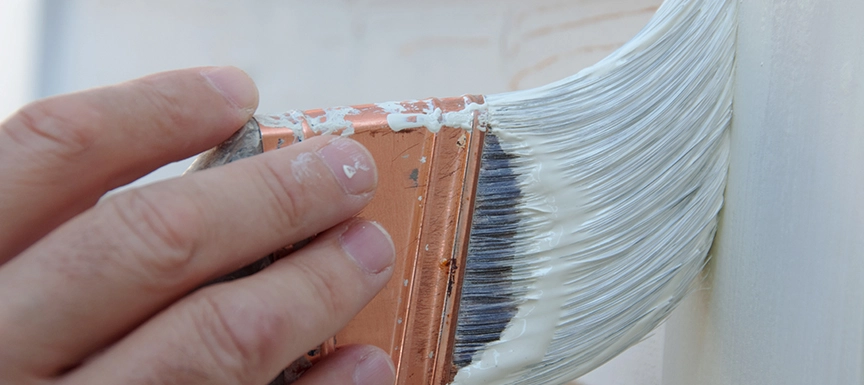
Primer is the first coat of layer applied on a wall to ensure proper adhesiveness between the paint and the wall. Emulsion primer paint like Nerolac Premium Primer WB penetrates deep into the walls to fill up its porous surface so the coat of paint can stick to the walls longer. White paint is a shade used mainly for more light reflection. The primer color resembles white paint, but both have different characteristics. The resin content of the primer is higher than that of the latter. Unlike white paint, this helps the former provide adhesive benefits to the walls.
Benefits Of Using White Primer Paint
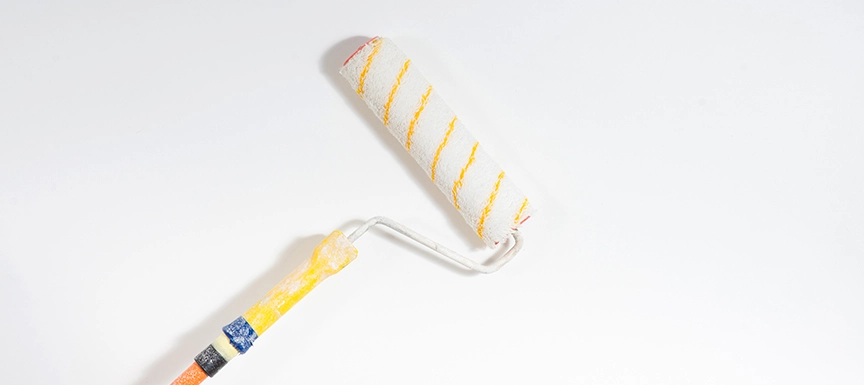
The importance of primer paint is easily overlooked, and some might even skip the step and go straight to painting the walls. However, priming your walls before beginning the painting is fundamental. This layer on the surface provides a lot of benefits apart from adhesiveness. Some of the major reasons to coat your walls with white primer paint are,
- Kitchen stains, ink, pencil marks, water stains, etc., are common imperfections of exterior and interior walls that we all want to conceal. However, the usual paints cannot effectively cover them; hence, a primer would be the best option to deal with them properly.
- Painting is a major remodeling option for several people. Hence, if you want to change the aesthetics of your home from vibrancy to a more comforting atmosphere, you will need to repaint orange, purple, or red walls with shades like pink, lavender, light blue, etc. However, dark colors tend to change the grade of the softer undertones; hence, a coat of primer will provide an opaque surface for the latter shades to shine in their brilliance.
- Primer is thicker and heavier than the usual paints. Hence, if there is some unleveled patch on the wall or similar other irregularities, the primer coat can easily conceal it, providing a suitable surface for the paint to spread uniformly.
- Fissures, cracks, etc, are common wall concerns and must be handled properly for better durability. Using primer in such situations is the best option since it seals these cracks to resist moisture or air pockets from harming the wall. In short, primers offer better durability along with adequate adhesiveness.
Different Types Of Primer
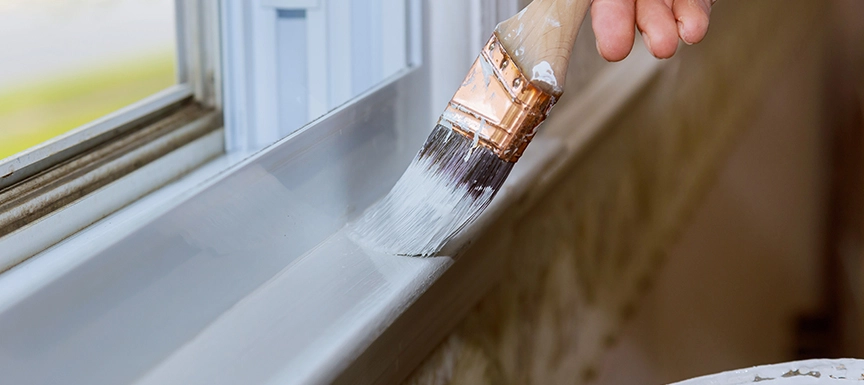
All primers might seem the same in terms of their physical appearance, but there are different types of primers based on their components and characteristics. Some of the popular ones are listed below.
1. Oil-Based Primer:
This is an all-rounder solvent-based product that can be used for both interior and exterior walls. They are best for bare and dry walls or porous wood surfaces. They can resist tannins that bleed from the woods through the paint. This helps the paint coat to remain intact. Moreover, it can be a good odor-suppressant.
2. Water-Based Primer:
If it is not drywall, then you can use water-based primers. This product is used for new walls and ceilings where major preparation is required. The primer can conceal stains like charring, ink marks, etc. They are well suited for interior painting.
3. Shellac-Based Primer:
It is a stain-blocking primer for surfaces like metals, glossy, plastics, ceramic tiles, and varnished surfaces. They are a good option for interior painting as they provide the best adhesion. Moreover, they can effectively work on wall surfaces damaged by water and smoke. Though they are quite durable, it is advisable not to use them for exterior painting.
4. Bonding Primer:
Various surfaces, like bare wood, drywall, tiles, glass, etc., require extra adhesiveness for the paint to retain longer. In such cases, bonding primer proves to be the best option. It has a water-based formula that quickly dries off. Moreover, the non-reflective finish helps the paints to sustain longer in exterior and interior wall paints.
5. Stain-Blocking Primer:
This is one of the most common and popular primer types for interior and exterior painting. They block the resin or tannin bleeding from the walls and wood, respectively, to hamper the coat of paint. They can also conceal watermarks, kitchen stains, and other surface imperfections, providing appropriate adhesiveness and durability.
6. Rust-Inhibiting Primer:
They prevent the surfaces from rusting due to abrasions or corrosion. These primers typically contain components like zinc or zinc phosphate, which forms a barrier on metal surfaces from rusting. This helps to properly prepare the walls for painting.
7. Mold-Resistant Primer:
Anti-mold primer paints are provided with biocides or active ingredients so the surface is well prepared to resist fungal degradation and moisture damage. They are water-based and are advisable for surfaces dealing with humidity and moisture, like bathrooms, laundry, kitchen walls, ceilings, etc.
Also Read How to Paint a House Like a Pro in Easy Steps?
How To Choose The Right Primer Paint
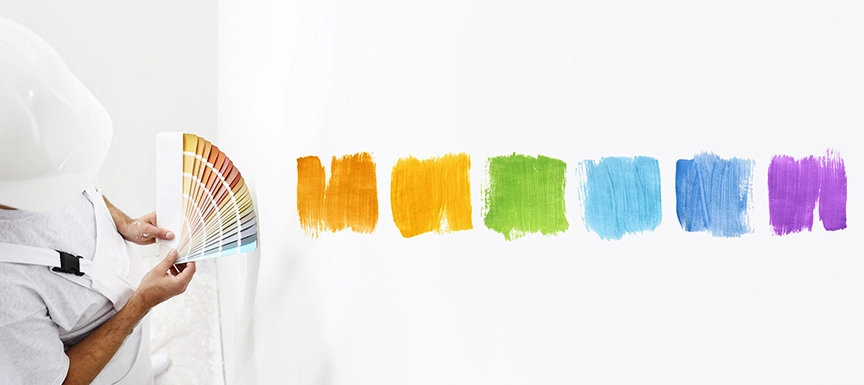
The range of primer paint varies widely, each serving a particular purpose. Hence, you must carefully decide the appropriate primer paint for your walls. Let us help you with the procedure,
● The initial factor is the surface type to which you will apply primer. A latex primer will be the best option if it is drywall or bare wood. However, PVA primer will be more suitable if the surface has a new texture. Similarly, if the surface is solvent-based, you can opt for a primer like Nerolac Premium Primer ST, which has a balanced combination of synthetic resin, pigments, and extenders for enhanced results. Moreover, if you intend to conceal stains and wall imperfections, choose stain-blocking primers for the best result.
● In several variants, the paint and primer white are integrated; hence, you do not need a thick primer composition. However, do not totally omit priming the wall, especially if it is bare, stained, or new. This combined option is best for previously painted surfaces.
● Lastly, your primer choice will depend on whether you use it for exterior or interior surfaces. For instance, Shellac primer should never be used for exterior painting; oil and latex paints are always better since these walls are subjected to harsh weather conditions.
Application Tips And Techniques
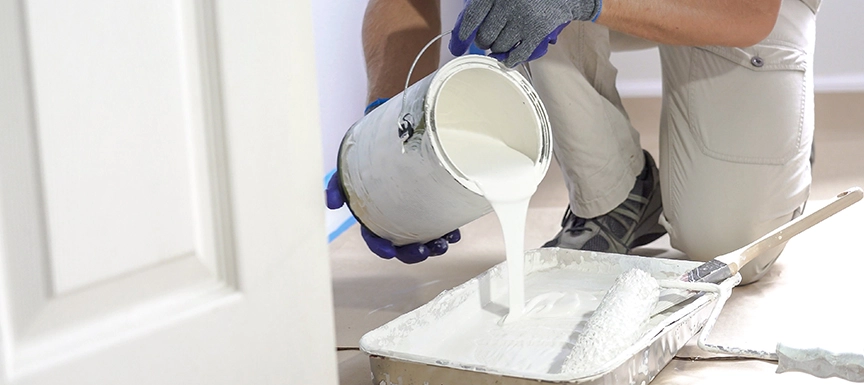
Applying primer to surfaces might be more challenging than it appears. Rather, there is a certain manner to paint white primer for desirable results. Let us share some tips and tricks for properly layering your wall with primer.
- Before applying primer, the surface needs to be adequately cleaned with a damp cloth and mild detergent. Fill in the damages in the walls, scrap off the flaky paint layer, and level the surface so that the primer gets a smooth surface that spreads uniformly.
- You need to apply a generous amount of the product, but ensure you are not left with a patchy primer layer. Hence, works in small sections and thin layers.
- VOCs in primers make the air around harmful to breathe; hence, ventilate the area as much as possible and wear a mask when working there.
- The perfect primer application technique is to start from the top and work your brushes down the walls. Try to use synthetic brushes for latex primers and natural bristle brushes for oil-based primers.
Conclusion
Primers can be considered the stepping stone for the successful completion of the painting. If you are not using white primer paints before painting, you might not receive the desired results. Hence, performing this step with adequate accuracy will help the paint flaunt its shine and elegance.
Nerolac Paints, a leading paint company in India offers a wide range of wall paint colours & painting services & solutions for homes & offices.

Colour Combination for Walls: 10 Beautiful House Colour Combination Ideas
A Guide To Trending Colour Combinations For Walls With Images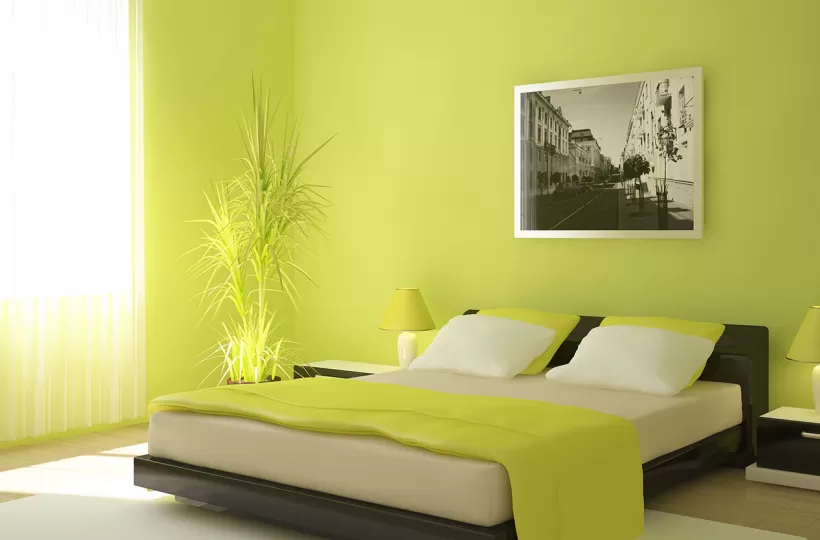
12 Stylish Green Colour Combinations and Photos
Green Colour Combinations
What Colours Match with Blue? 14 Colour Combinations with Blue for Your Home
Blue is a universally popular colour for décor and design
-
Recent Blogs
- 10 Bedroom Ceiling Colour Ideas To Try in 2024
- What Are Warm Colours? Exploring Warm Colour Schemes for Interior Walls
- Top 10 Wall Structure Design and Painting Ideas for Modern Homes
- Top 10 Wall Paints for Wood Wall Designs to Enhance Modern Interiors
- Top 10 Living Room Wall Decor Ideas with Colour to Elevate Your Space
Get in Touch
Looking for something else? Drop your query and we will contact you.
Get in Touch
Looking for something else? Drop your query and we will contact you.
Popular Searches
Get in Touch
Looking for something else? Drop your query and we will contact you.


